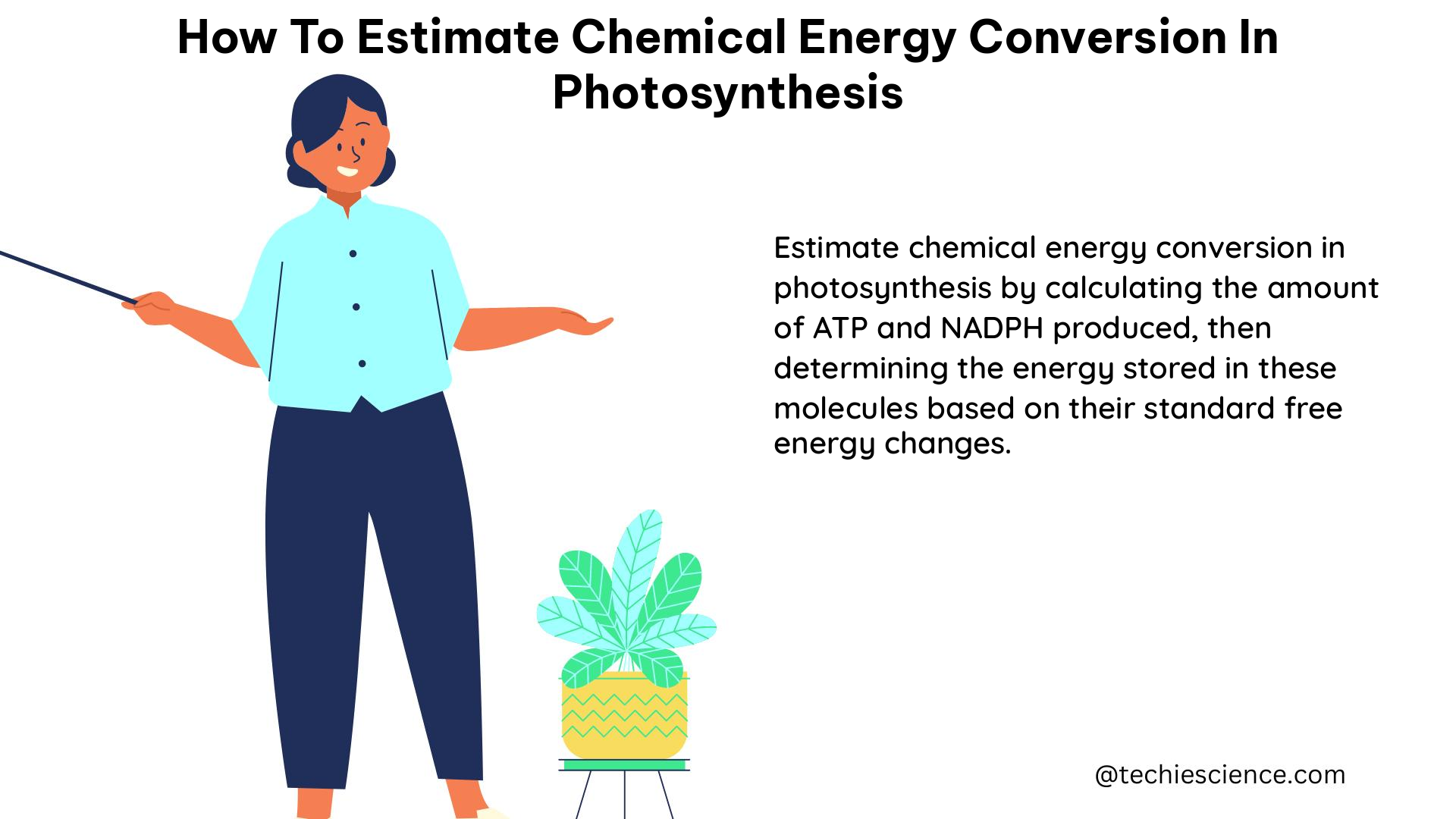Photosynthesis is a fundamental process in which plants and other photosynthetic organisms convert light energy into chemical energy in the form of carbohydrates. Estimating the efficiency of this energy conversion is crucial for understanding the overall productivity and sustainability of ecosystems. In this comprehensive guide, we will explore various methods and techniques to accurately estimate the chemical energy conversion in photosynthesis.
Measuring CO2 Uptake
One of the primary ways to estimate the rate of photosynthesis is by measuring the uptake of carbon dioxide (CO2) by the plant. This can be done using several methods:
-
Immobilized Algae in Hydrogen Carbonate Indicator Solution: This technique involves using immobilized algae in a hydrogen carbonate indicator solution. As the algae photosynthesize, they consume CO2, causing a change in the pH of the solution, which can be measured and correlated to the rate of photosynthesis.
-
Infrared Gas Analyzer (IRGA): An IRGA measures the concentration of CO2 in the gas passing into and out of a chamber surrounding a leaf or plant. By monitoring the difference in CO2 concentration, the rate of photosynthesis can be calculated.
-
CO2 Monitor: A CO2 monitor can be used to measure the CO2 concentration in a plastic bag containing a plant. Alternatively, a Bicarbonate Indicator Solution can be used in the bag with the plant, and the color change can be observed to estimate the CO2 uptake.
Measuring Oxygen Production

Another method to estimate the rate of photosynthesis is by measuring the production of oxygen (O2) by the plant. This can be done using the following techniques:
-
Bubble Counting: The number of bubbles evolved from pondweed can be counted to estimate the rate of oxygen production and, consequently, the rate of photosynthesis.
-
Audus Apparatus: The Audus apparatus is used to measure the amount of gas evolved over a period of time. It involves placing Cabomba pondweed in an upside-down syringe in a water bath connected to a capillary tube, and then putting the weed in a solution of NaHCO3.
Measuring Carbohydrate Production
The production of carbohydrates, the primary products of photosynthesis, can also be used to estimate the rate of photosynthesis. This can be done using a crude method where a disc is cut out of one side of a leaf, dried, and weighed. After some time, a disc is cut from the other half of the leaf, dried, and weighed. The increase in mass of the disc is an indication of the extra mass that has been stored in the leaf, which can be correlated to the rate of photosynthesis.
Measuring Dry Mass Increase
The increase in dry mass of a plant over time can be used to estimate the rate of photosynthesis. This can be done using the technique of ‘serial harvests’, where several plants are harvested, dried to constant weight, and weighed. This process is repeated over the duration of the experiment, providing an accurate measure of the surplus photosynthesis over and above the respiration that has taken place.
Mathematical Modeling
In addition to the experimental methods, mathematical modeling can also be used to estimate photosynthesis. These models can take into account various factors, such as light intensity, temperature, and CO2 concentration, and provide estimates of photosynthesis at different scales, from leaf to ecosystem.
Calculating Photosynthetic Efficiency
To estimate the efficiency of the chemical energy conversion in photosynthesis, it is necessary to measure the amount of light energy absorbed by the plant and the amount of chemical energy produced. The amount of light energy absorbed can be measured using a light meter, which provides the intensity of light in units of energy per unit area per unit time (e.g., watts per square meter). The efficiency of photosynthesis can then be calculated by dividing the amount of chemical energy produced by the amount of light energy absorbed.
Factors Affecting Photosynthetic Efficiency
The efficiency of photosynthesis can be influenced by various environmental and physiological factors, such as:
- Light Intensity: The rate of photosynthesis generally increases with increasing light intensity, up to a saturation point.
- Temperature: Photosynthesis is temperature-dependent, with an optimal temperature range for most plants.
- CO2 Concentration: Increasing the CO2 concentration can enhance the rate of photosynthesis, up to a certain level.
- Water Availability: Adequate water supply is crucial for maintaining the turgor pressure and physiological processes necessary for photosynthesis.
- Nutrient Availability: The availability of essential nutrients, such as nitrogen, phosphorus, and potassium, can affect the rate of photosynthesis.
By understanding and accounting for these factors, researchers and scientists can more accurately estimate the chemical energy conversion in photosynthesis and optimize the productivity of photosynthetic organisms.
Conclusion
Estimating the chemical energy conversion in photosynthesis is a crucial step in understanding the overall productivity and sustainability of ecosystems. This comprehensive guide has provided an overview of the various methods and techniques available, including measuring CO2 uptake, oxygen production, carbohydrate production, dry mass increase, and mathematical modeling. By considering the factors that affect photosynthetic efficiency, researchers can obtain more accurate estimates and insights into this fundamental process.
References
- Measuring the rate of photosynthesis – Science & Plants for Schools. Available at: https://www.saps.org.uk/teaching-resources/resources/157/measuring-the-rate-of-photosynthesis/
- Bio Exam 1 Lecture Follow-up Questions. Available at: https://quizlet.com/434020470/bio-1-exam-flash-cards/
- Mathematical Modeling to Estimate Photosynthesis: A State of the Art. Available at: https://www.mdpi.com/2076-3417/12/11/5537
- Thermochemistry. Available at: https://web.ung.edu/media/chemistry/Chapter5/Chapter5-Thermochemistry.pdf

The lambdageeks.com Core SME Team is a group of experienced subject matter experts from diverse scientific and technical fields including Physics, Chemistry, Technology,Electronics & Electrical Engineering, Automotive, Mechanical Engineering. Our team collaborates to create high-quality, well-researched articles on a wide range of science and technology topics for the lambdageeks.com website.
All Our Senior SME are having more than 7 Years of experience in the respective fields . They are either Working Industry Professionals or assocaited With different Universities. Refer Our Authors Page to get to know About our Core SMEs.